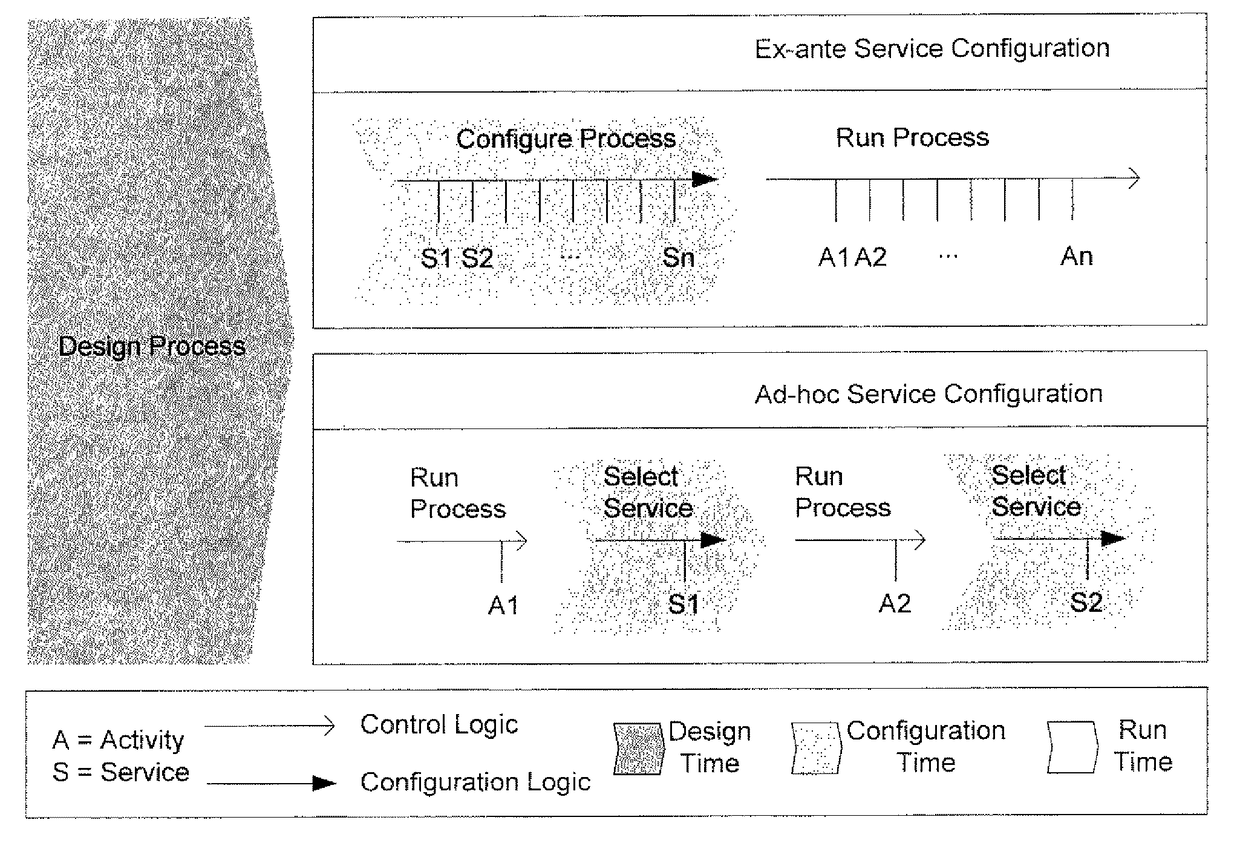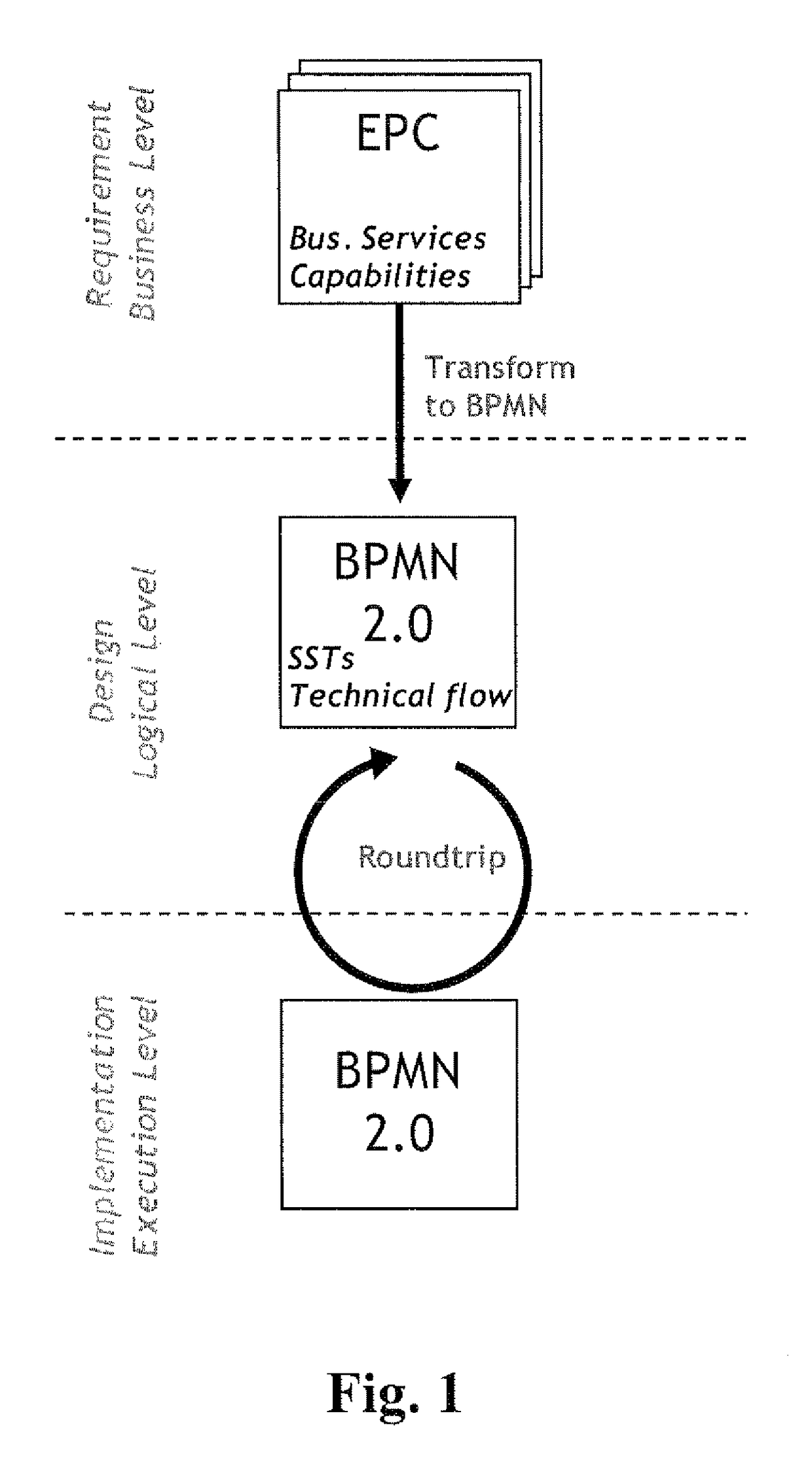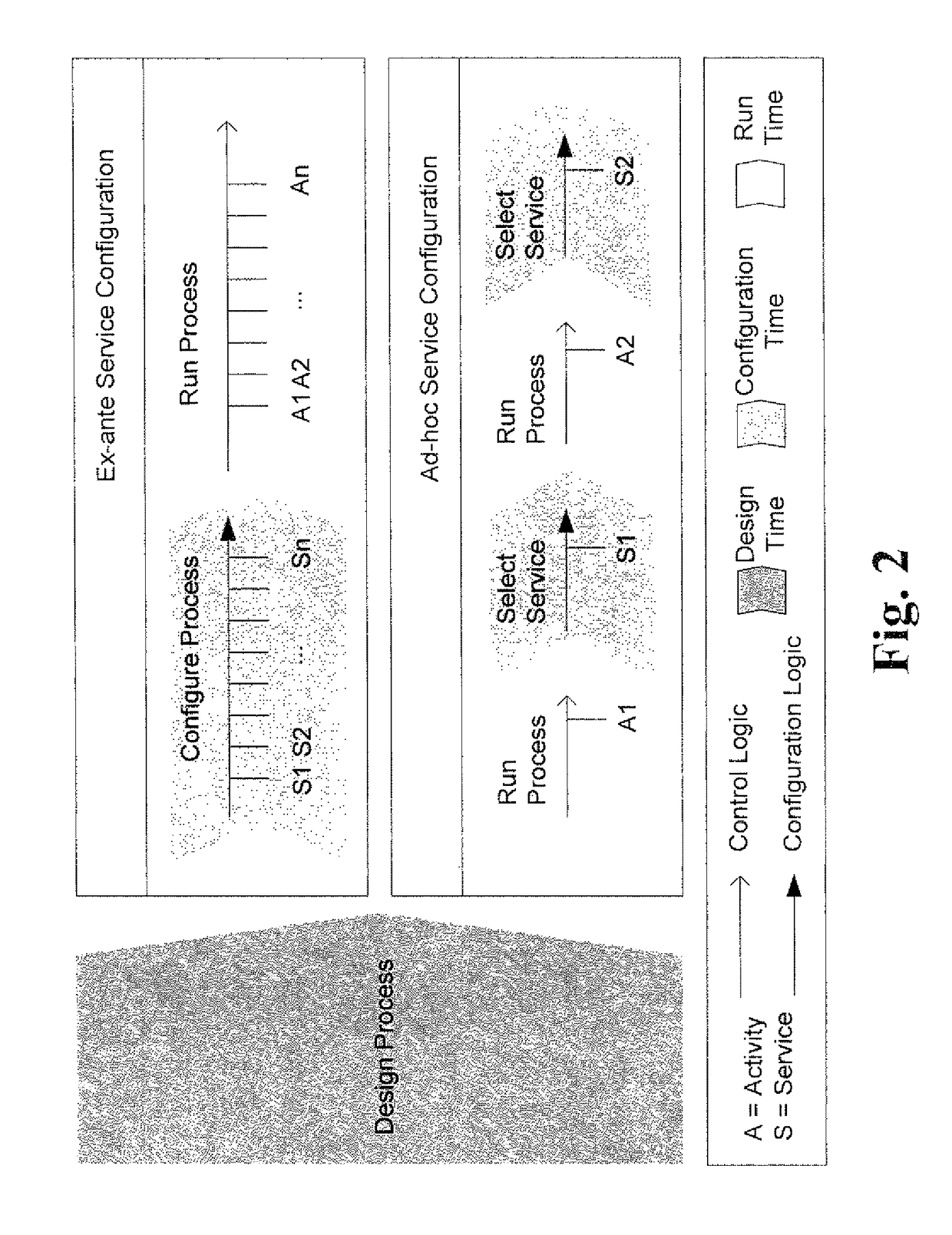Service-oriented process configuration systems and/or methods
a technology of process configuration and service orientation, applied in the field of service-oriented business process systems, can solve the problems of plethora of heterogeneous and increasingly distributed software systems, not yet fully executable business process automation, and inability to meet the requirements of business process automation, etc., and achieve the effect of increasing the efficiency and effectiveness of process execution
- Summary
- Abstract
- Description
- Claims
- Application Information
AI Technical Summary
Benefits of technology
Problems solved by technology
Method used
Image
Examples
Embodiment Construction
[0043]Certain example embodiments described herein relate to service-oriented business process systems (SO-BPSs). More particularly, certain example embodiments described herein relate to techniques for matching business requirements with available services, e.g., in connection with a realistic n-to-m relationship therebetween. In certain example embodiments, it becomes possible to distinguish between diverse configurational operators and to elaborate on possible resolution techniques before process execution, including identifying and resolving configurational dependencies between service matches so as to support both future designs and dynamic changes at runtime. The addition of a service-oriented process configuration layer is made possible in certain example embodiments by enhancing the way that business processes are modeled visually or notationally, and through the implementation of a metamodel. With respect to the former, it will be appreciated that the model linking process ...
PUM
 Login to View More
Login to View More Abstract
Description
Claims
Application Information
 Login to View More
Login to View More - R&D
- Intellectual Property
- Life Sciences
- Materials
- Tech Scout
- Unparalleled Data Quality
- Higher Quality Content
- 60% Fewer Hallucinations
Browse by: Latest US Patents, China's latest patents, Technical Efficacy Thesaurus, Application Domain, Technology Topic, Popular Technical Reports.
© 2025 PatSnap. All rights reserved.Legal|Privacy policy|Modern Slavery Act Transparency Statement|Sitemap|About US| Contact US: help@patsnap.com



